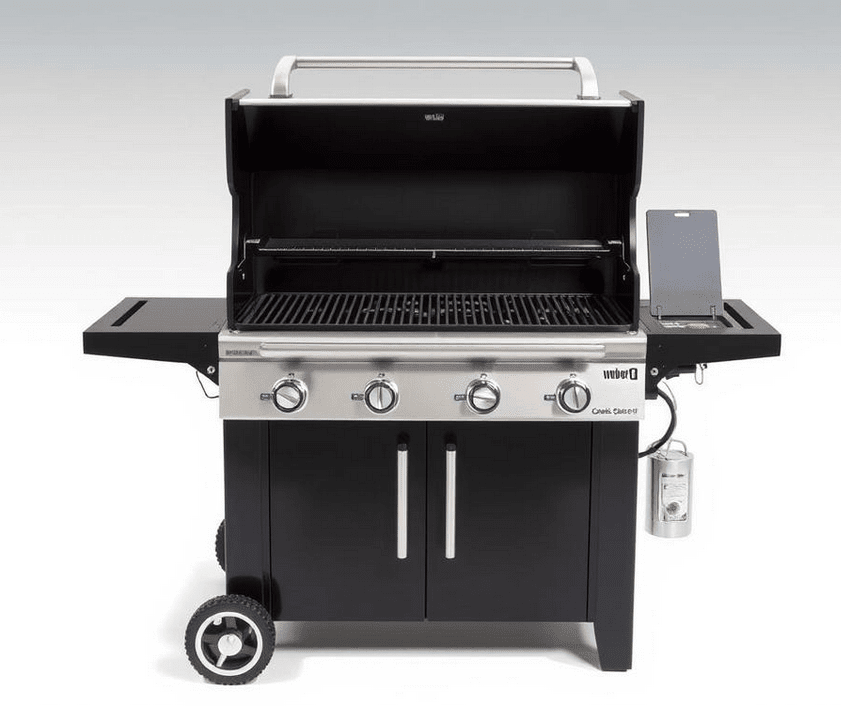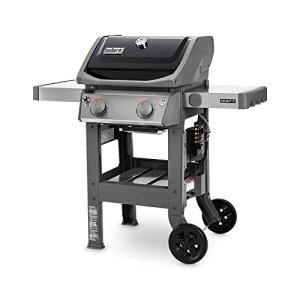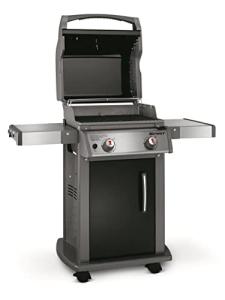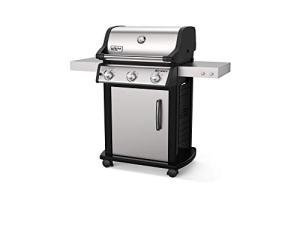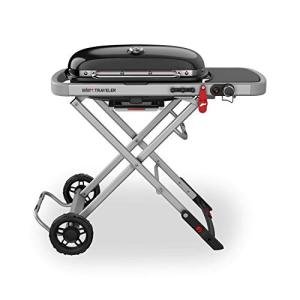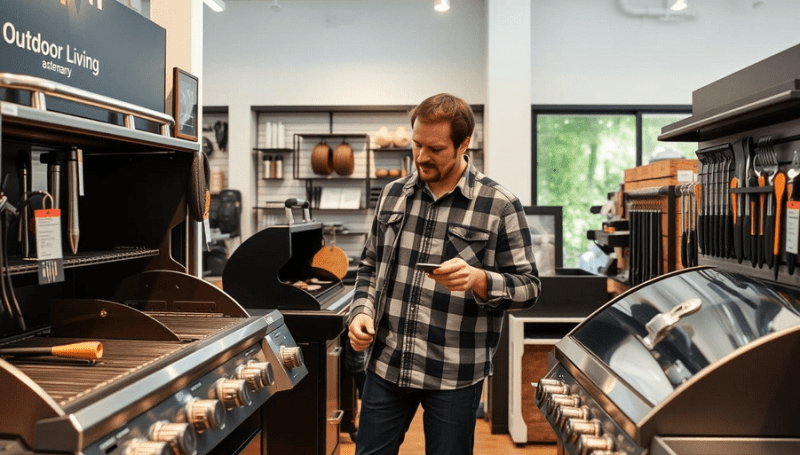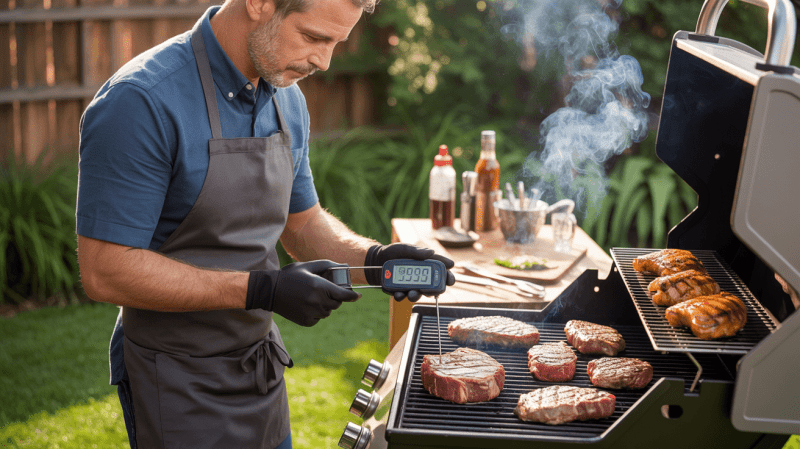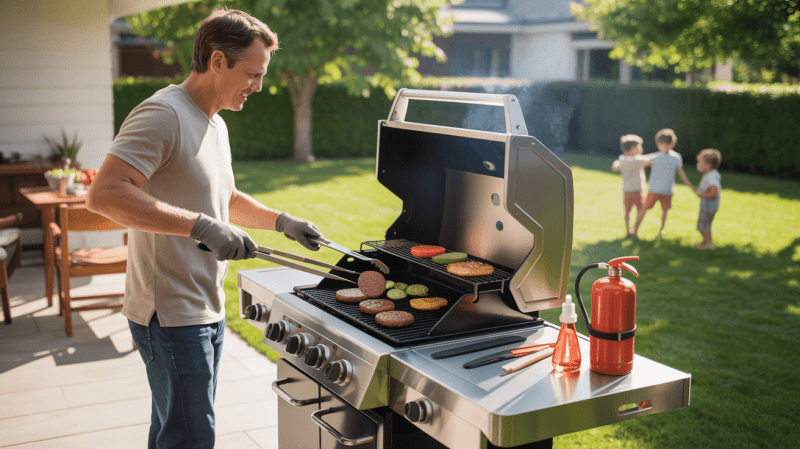How to pick the right grill size for your home:

Choosing the right grill size is key for a great outdoor cooking experience. I've learned that how often you cook outside matters. So does the space you have and what you like to cook.
Knowing these things helps you pick the perfect grill. Think about how often you'll use it, the space you have, and what you cook. This way, you'll find the best grill size for your outdoor kitchen.
Key Takeaways
- Consider your entertaining frequency when selecting a grill size.
- Assess the available space in your outdoor kitchen.
- Think about your specific cooking needs.
- A well-chosen grill size enhances your outdoor cooking experience.
- Selecting the right grill size is crucial for a great outdoor cooking experience.
Why Grill Size Matters

The size of your grill affects how well you cook and your outdoor kitchen's layout. Choosing the right grill size can make grilling better. But picking the wrong one can cause problems.
Impact on Cooking Performance
A bigger grill means more space to cook. This is great for big gatherings or families. But think about how much space and money you have.
Space Considerations
Check how much outdoor space you have before picking a grill. Ensure it fits well and leaves sufficient room for movement. Also, think about any extra features like shelves or storage.
Budget Implications
Grill size affects your budget. Bigger grills cost more to buy and use. Know your budget before you decide.
Fuel Efficiency Factors
How much fuel a grill uses is important. Bigger grills use more fuel, which can raise costs. Look for grills that use fuel well, like those with special burners or insulation.
Think about these points to find the perfect grill size for you. It should meet your cooking needs, fit your space, and match your budget. A grill size calculator can help determine the ideal grill size for you.
Understanding Grill Dimensions

To pick the right grill, knowing the different sizes is key. These sizes affect how much you can cook and how well it works.
Primary Cooking Area
The main area for grilling is crucial. Consider how large it needs to be based on your cooking habits. If you grill for big groups, you'll need a bigger area.
Secondary Cooking Space
Spaces like warming racks enhance your grilling experience. They let you cook more things at once, perfect for parties.
Total Cooking Surface
The total surface area shows how much you can cook. It's the main area plus any extra spaces. Knowing this helps you see if the grill fits your needs.
Physical Footprint Measurements
The size of a grill matters for where it goes. Its width, depth, and height must fit your outdoor space.
Width and Depth Requirements
Check the grill's width and depth against the dimensions of your outdoor kitchen. Make sure there's room for easy access and air flow.
Height Considerations
The grill's height is also important. A tall grill can be hard to handle, and a short one might make you bend too much. Consider how comfortable you feel.
How to Choose the Right Grill Size

Choosing the right grill size is key for outdoor cooking fans. It's not just about having a grill. It's about finding the perfect one for your needs.
Assessing Your Available Space
Before picking a grill, check the space it will go in. You need to measure your patio or deck to make sure it fits well.
Measuring Your Patio or Deck
Get exact measurements of where you'll put your grill. Think about the grill's size and extra space for safety.
Clearance Requirements
Ensure there's sufficient space around the grill to prevent accidents. Think about how close it is to your house, garage, or fences.
Determining Your Cooking Needs
Knowing what you cook is key to picking the right grill size. Think about how many people you cook for and what you grill most.
Number of People You Typically Cook For
If you host big groups, you'll need a bigger grill. Smaller families might do fine with a smaller one.
Types of Food You Grill Most Often
For grilling multiple items at once, such as burgers and vegetables, you need a larger grill.
Considering Portability Requirements
Think about moving your grill if you need to. Some grills are easier to move because they're lighter and have foldable legs.
By considering your space, cooking needs, and portability, you can determine the perfect grill size for your outdoor cooking.
- Measure your patio or deck to ensure a comfortable fit.
- Consider the number of people you typically cook for.
- Think about the types of food you grill most often.
- Assess the portability requirements of your grill.
Different Grill Types and Their Sizing
Grills come in many types, each with its own size needs. It's key to know the different types and their sizes.
Gas Grill Dimensions
Gas grills are loved for their ease and variety in size. They let you control the heat well, perfect for many foods. Think about the primary cooking area and any secondary cooking spaces when picking a gas grill.
Charcoal Grill Sizes
Charcoal grills give a classic grilling feel and come in many sizes. They add a smoky taste to food. The size of a charcoal grill matters for how much food you can cook at once.
Pellet Grill Measurements
Pellet grills are easy to use and versatile. They come in various sizes to meet different cooking needs. Look at the total cooking surface and the grill's size to fit your space.
Electric Grill Options
Electric grills are compact and ideal for small outdoor kitchens or indoor use. They come in many sizes for various cooking needs. When picking an electric grill, think about the cooking surface size and how portable it is.
Kamado and Ceramic Grill Considerations
Kamado and ceramic grills offer special cooking experiences. They come in sizes for different needs. When choosing one, consider the size and how it will fit into your outdoor cooking area.
Grill Sizes for Different Household Needs
Choosing the right grill size can make outdoor cooking better. It depends on how many people you cook for and how often you have guests.
Small Grills (Under 300 Square Inches)
Small grills are best for singles or couples who grill sometimes. They're great for small meals and fit on small spaces.
Ideal Uses and Limitations
These grills are good for one or two people. But they're not for big families or frequent guests. You need to plan meals carefully.
Medium Grills (300-500 Square Inches)
Medium grills are versatile and good for small families. They can cook for 3-4 people and are a top choice for many.
Versatility and Common Applications
These grills are great for families who grill often. They can cook many things at once, perfect for weeknights or small parties.
Large Grills (500-700 Square Inches)
Large grills are ideal for large families or those who frequently entertain guests. They have lots of space for cooking for many.
Benefits for Frequent Entertainers
These grills are ideal for big parties or family events. They let you cook many dishes at once, making hosting easier and fun.
Extra-Large Grills (700+ Square Inches)
Extra-large grills are for big gatherings and events. They're perfect for those who host large parties or have lots of guests.
When to Invest in Maximum Capacity
If you often have big gatherings, an extra-large grill is a good choice. It lets you cook for many people at once, great for big families or those who love to entertain.
Matching Grill Size to Your Entertaining Style
Your entertaining style helps pick the perfect grill size. Whether it's for small family dinners or big parties, the right grill size matters a lot.
Intimate Family Dinners
For small gatherings, a 300 square inch grill is good. It's perfect for 2-4 people. Compact grills are great for small families or couples.
Regular Weekend Gatherings
For weekend gatherings with 6-8 people, a 400-500 square inch grill is best. It lets you cook many things at once, making it easier for big groups.
Large Parties and Events
For large parties or events, choose a grill with a surface area of 700 square inches or larger. These grills are ideal for cooking for large groups.
Cooking Multiple Items Simultaneously
For cooking many things at once, look for a big grill. Also, consider one with multiple burners or cooking zones. This gives you more control and flexibility.
| Entertaining Style | Recommended Grill Size | Ideal for |
|---|---|---|
| Intimate Family Dinners | 300 square inches | Cooking for 2-4 people |
| Regular Weekend Gatherings | 400-500 square inches | Cooking for 6-8 people |
| Large Parties and Events | 700+ square inches | Cooking for large crowds |
Choosing the right grill size for your entertaining style makes outdoor cooking better. It ensures you're ready for any gathering.
Common Grill Size Mistakes to Avoid
Choosing the right grill size can be tough. But, avoiding common mistakes makes it easier. When determining grill capacity, think about a few key things for a great outdoor cookout.
Going Too Small and Limiting Options
A grill that's too small can limit what you can cook. If you cook for a big family or host parties, a small grill won't do. Consider how many people you typically cook for and what dishes you enjoy preparing.
Choosing Excessive Size for Your Needs
But, a grill that's too big can also be a problem. A huge grill takes up too much space and uses more fuel. This can make your outdoor area hard to move around in and cost more to use.
Ignoring Future Needs and Flexibility
Think about your future grilling plans too. If your family size or how you like to entertain might change, pick a grill that can grow with you. Look for one with adjustable or extra cooking areas.
Overlooking Storage and Cover Requirements
Don't forget about storage and covers for your grill. A cover keeps it safe from the weather. And, having a place for accessories and fuel makes grilling better. By keeping these tips in mind, you'll have a better grilling experience.
Forgetting About Accessory Space
Lastly, think about where you'll put your grill accessories. Having enough space for utensils, plates, and seasonings makes grilling easier and more fun. By thinking about these things and finding the right grill measurement, you can avoid common mistakes and enjoy grilling more.
Conclusion
Choosing the right grill size is very important. It changes how you cook outside. Think about what you need, how much space you have, and how you like to entertain.
It's essential to consider the grill's size carefully. Look at the grill type, cooking area, and how big it is. Knowing the difference between small and big grills helps you choose better.
Follow these tips to pick the right grill size. This way, you avoid mistakes and get a grill that suits you. Whether it's for a small family dinner or a big party, the right grill makes cooking outside better.
FAQ
Q: What factors should I consider when choosing a grill size?
A: Think about how often you entertain, the space you have, and what you like to cook. This helps pick a grill that fits your life.
Q: How do I measure my available space for a grill?
A: Measure your patio or deck. Ensure there's sufficient room for safe use. This will help you find the right grill size.
Q: What is the difference between primary and secondary cooking areas?
A: The main area is for most grilling. The secondary space is for warming or cooking extra items. It adds flexibility to your grilling.
Q: How does grill size impact cooking performance?
A: A bigger grill lets you cook more at once. This improves your grilling. A smaller grill limits what you can cook.
Q: What are the different types of grills and their sizing considerations?
A: Gas, charcoal, pellet, electric, kamado, and ceramic grills vary in size. They differ in cooking area, size, and fuel use. Each meets different cooking needs.
Q: What size grill is ideal for a small household?
A: A small grill (under 300 square inches) is great for singles or couples. It's perfect for occasional grilling.
Q: How do I determine the right grill size for my entertaining style?
A: Think about how many people you cook for, the food you grill, and how often you host. This helps choose the right grill size.
Q: What are the common mistakes to avoid when selecting a grill size?
A: Don't choose too small or too big a grill. Don't forget about storage, covers, and space for accessories. This ensures a good grilling experience.
Q: Can I use a grill with a larger cooking surface than I need?
A: A bigger grill offers more space but might be impractical and use more fuel. Consider your needs before selecting a size.
Q: How do I balance grill size with available space and cooking needs?
A: Look at your space, cooking needs, and if you need to move the grill. This helps find the right size for you.
DISCLAIMER
This document is provided for general information purposes only and should not be relied upon as providing legal advice, technical, or specific operational guidance to the reader, whether as to the practices described in the document or the applicable legal requirements and regulations. backyardgrillingpros.com expressly disclaims any responsibility for liability arising from or related to the use or misuse of any information in this document.
